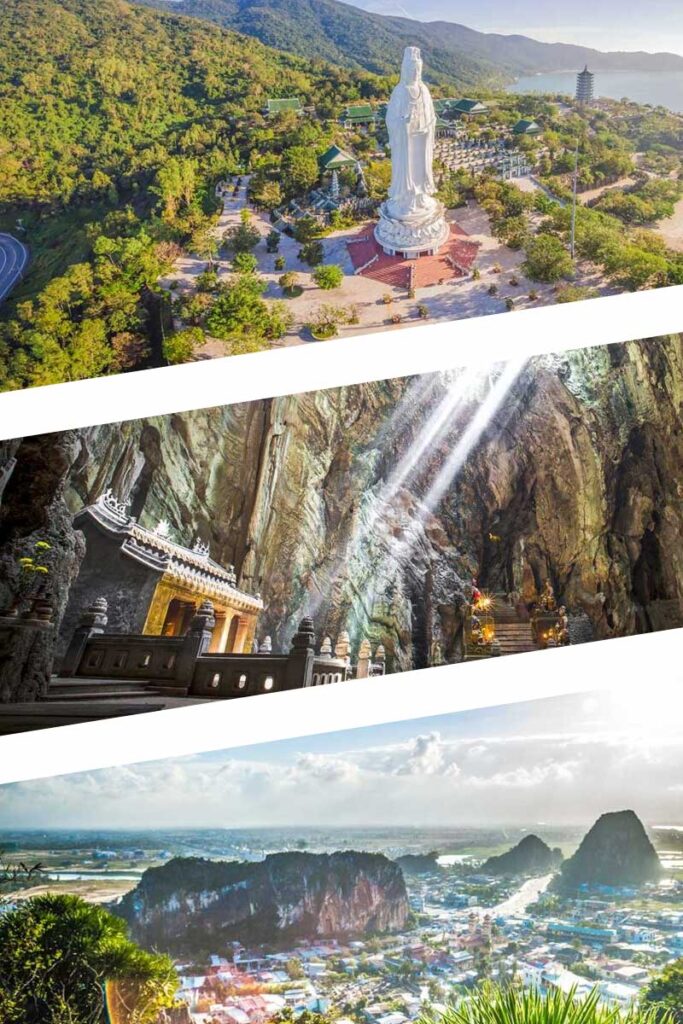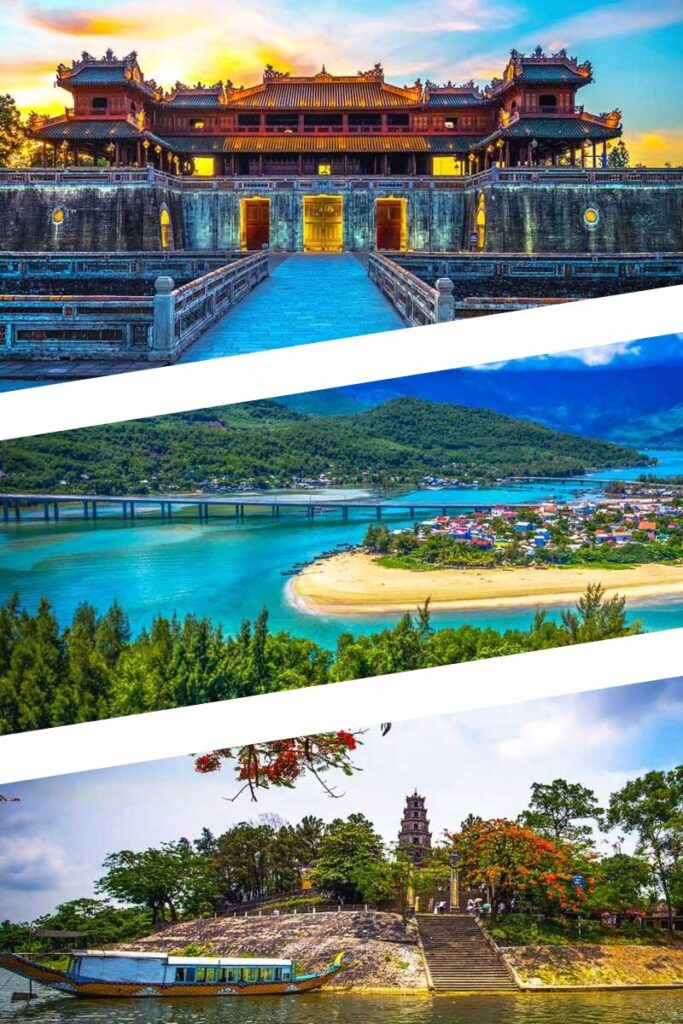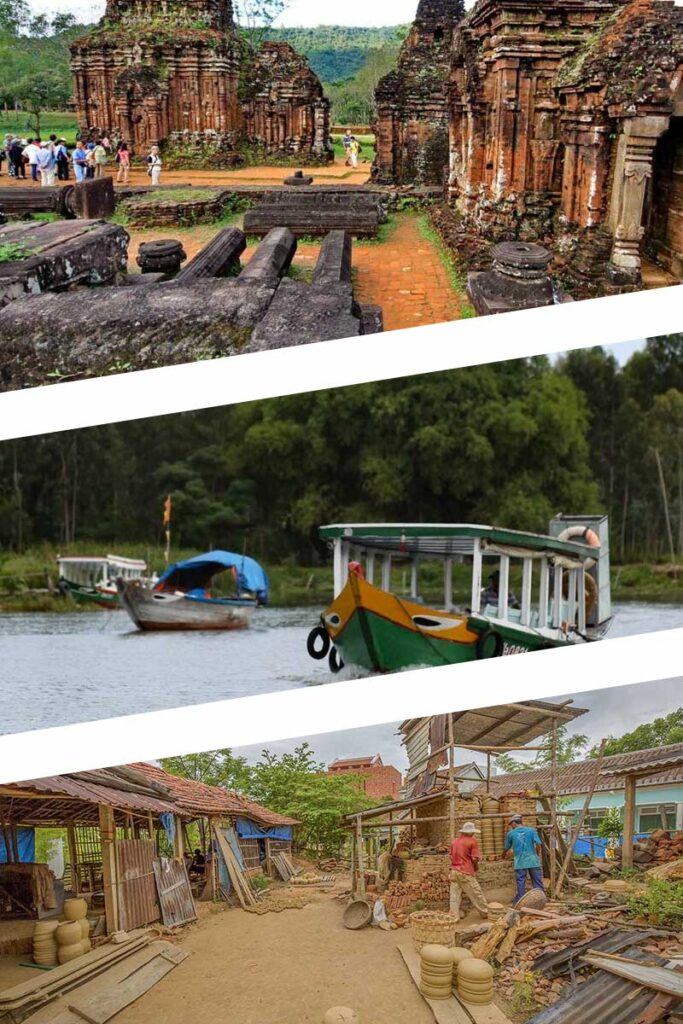Car rental vs Taxi
If you’re staying in Hoi An, your choice between using a taxi or booking a car with driver depends on where you’re going and how long you need the vehicle. Here’s how to decide:
When to use a taxi
Taxis are ideal for short, local trips within or around Hoi An.
- Getting from your hotel to Hoi An Ancient Town, the beach, or a restaurant.
- No need to plan ahead — just grab one when you need it.
- Available through ride-hailing apps or street pickup.
Best for:
- Going out for dinner or shopping
- Short distances
- Last-minute trips
Tip: Ride-hailing apps in Hoi An
Apps like Grab and Xanh SM (electric taxis) are widely used in Hoi An and more reliable than flagging down a random taxi.
- You see the price upfront, no need to negotiate or worry about the meter.
- Can choose between car types (standard, SUV, electric).
- Vietnamese SIM card with mobile data is required to book through the app.
- Payment can be made in cash or via linked card (depending on the app).
If you just need a quick ride around town, ride-hailing apps are usually the cheapest and easiest option.
When to choose car rental with driver
Car rental Hoi An is better when you need more flexibility or plan to travel further.
- Day trips to Da Nang, Ba Na Hills, My Son Sanctuary, or Hue
- One-way trips further from Hoi An, like going to Da Nang airport or train station
- Visiting multiple stops or doing sightseeing along the way
Best for:
- Comfortable transfers without worrying about return transport or high meter rates
- Full-day use or multiple stops
- Trips outside Hoi An
What to expect
If you’re booking car rental in Hoi An, here’s what you can realistically expect during your trip.
Car always comes with a driver
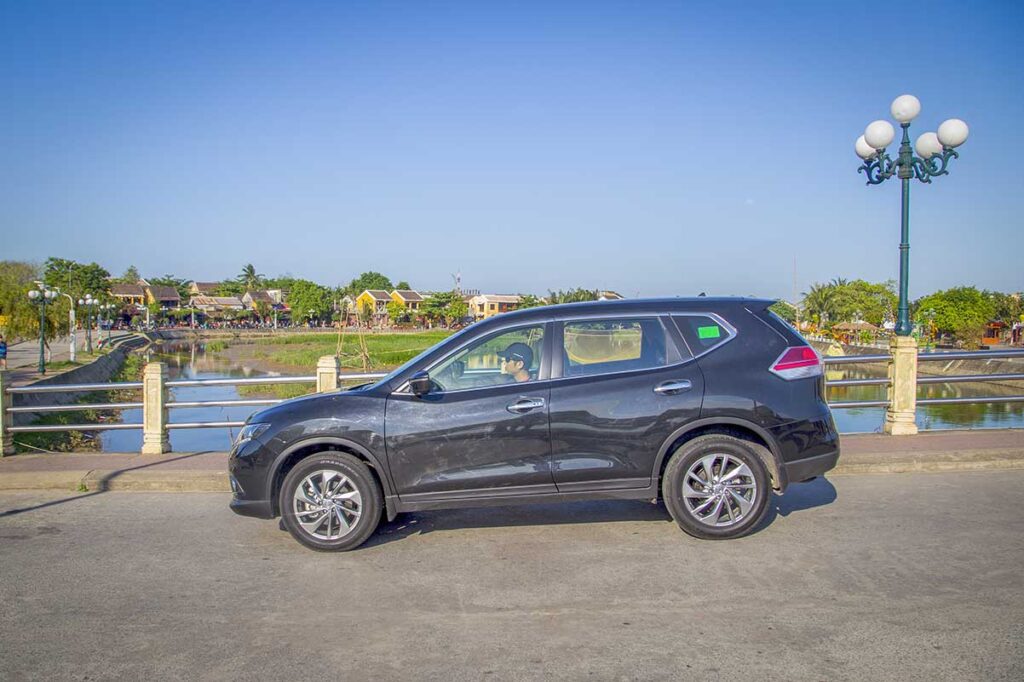
In Vietnam, it’s not legally possible for foreigners to rent a self-drive car. And even if it were, driving yourself isn’t advisable — traffic can be chaotic, road rules are different, and signage may be unclear. That’s why every car rental in Hoi An automatically includes a local driver. It’s a safer, more relaxed way to get around.
Driver is not a guide
Your driver is there to get you from place to place, not to give commentary or help you plan your day. Some speak basic English, especially in and around Hoi An, but it varies. In tourist areas, a few drivers may speak more fluently — but this shouldn’t be expected. If you want in-depth explanations or historical context at the sights, it’s best to hire a separate guide.
Fixed price, no surprises
Unlike taxis, car rentals work on a fixed price agreed upfront. You won’t be watching the meter run or guessing how much it’ll cost at the end. Just make sure you clearly outline your itinerary in advance — places you want to visit, estimated timings, and final drop-off point. Midway changes can be hard to communicate and may come with extra charges.
What’s included in the rental
The price of your rental includes everything needed for the ride: fuel, toll fees, parking, and the driver’s meals. It doesn’t cover entrance fees to sights, your food and drinks, or personal expenses along the way. Some drivers provide bottled water, but it’s not guaranteed.
Tips for your car trip
Tipping:
Tipping is not expected in Vietnam and most locals don’t tip — including for drivers. That said, if your driver was especially helpful or went the extra mile, it’s appreciated. Around 50,000–100,000 VND for a full-day trip is a nice gesture, but there’s no pressure.
Lunch breaks for the driver:
Drivers usually eat while you visit a sight or relax at a stop. If you’re planning a lunch stop for yourself, especially at a nicer restaurant, your driver will likely find a simple local spot nearby. You can always invite them to join you — but it’s not necessary, and most won’t expect it.
Air-conditioning and music:
Don’t hesitate to ask the driver to adjust the air-conditioning or music. Most are used to simple requests like “a bit cooler” or “no music,” and won’t be offended. You don’t need perfect Vietnamese — a quick gesture or basic English usually works fine.
Smoking:
Smoking is not allowed in the car. If you need a smoke break, just ask — most drivers will stop for a short break along the way.
Seatbelts:
Drivers won’t usually remind you to wear a seatbelt, and some may even use plugs to disable front-seat alarms. Still, it’s strongly recommended to wear seatbelts, both front and back, even on short trips — roads in Vietnam can be unpredictable.
Child seats and baby seats:
These are very rare in Vietnam. Most drivers don’t have them. If you need one, your best bet is to bring your own or try to rent one locally around Hoi An or Da Nang, where expat families and some rental agencies may have them — but availability is not guaranteed.
Car types available in Hoi An
When renting a car in Hoi An with a driver, you can choose from several vehicle types depending on your group size and luggage needs:
- 4-seater – Best for 2–3 passengers with light luggage. A compact and economical option, perfect for airport transfers or short sightseeing trips around Hoi An.
- 7-seater – A good choice for families or small groups, but be aware that luggage space is limited. To fit larger suitcases, one or more seats often need to be folded down — so it’s not ideal for 6–7 people traveling with full luggage.
- 16-seater minivan or 9-seat limousine van – Designed for larger groups or those wanting more comfort. However, despite the seating capacity, these vehicles don’t always have enough space for 15+ suitcases. They work best for group day trips with minimal luggage. For longer journeys with full baggage, some seats may need to be used for storage.
Important note:
Always let the rental company know your group size and how much luggage you have. This helps ensure they assign the right type of vehicle for your trip — especially if you’re heading to or from the airport or traveling between cities.
Prices for car rental in Hoi An
The cost of car rental in Hoi An depends on your destination, how long the trip takes, and the type of vehicle. Full-day trips cost more than short transfers, and prices increase with larger vehicles or more complex itineraries.
Many popular routes have fixed prices, making it easier to budget in advance.
Rough price estimates (one-way or round-trip as noted):
- Hoi An → Da Nang Airport: from 300,000–450,000 VND (one way)
- Hoi An → Ba Na Hills (round trip, driver waits): from 1,000,000–1,400,000 VND
- Hoi An → Hue (sightseeing transfer): from 1,600,000–2,000,000 VND
- Hoi An → My Son Sanctuary (round trip): from 800,000–1,000,000 VND
Note:
Prices vary by vehicle size (4-seater, 7-seater, or minivan) and the exact route. Be clear about your itinerary when booking, especially if you want to stop at sights along the way.
Popular Hoi An car rental routes
Renting a car with driver from Hoi An makes it easy to explore central Vietnam’s highlights without hassle. These are the most common routes — ideal for airport transfers, sightseeing day trips, or moving between cities.
1. Hoi An – Da Nang
his is the most common car rental route in the area. There are two main ways people use it:
Airport or train station transfers
If you’re flying into or out of Da Nang, a private car is the easiest and most comfortable way to get to or from Hoi An. It’s more convenient and cheaper than a metered taxi. This route usually takes about 45–60 minutes.
Day trips from Hoi An to Da Nang

You can also rent a car for a half-day or full-day trip to explore Da Nang and return to Hoi An afterward. Popular stops include:
- Son Tra Peninsula – for coastal views, monkeys in the forest, and the large Linh Ung Pagoda with its towering Lady Buddha statue.
- Marble Mountains – a cluster of marble and limestone hills with caves and temples.
- My Khe Beach – a long sandy beach great for swimming or relaxing.
Marble mountains & Son Tra Peninsula Tour – By Small Group
- Experience: Explore Marble Mountains’ caves and pagodas, then visit the iconic Lady Buddha on Son Tra.
- Includes: Small-group tour with local guide, hotel pickup, and stunning coastal viewpoints.
2. Hoi An – Ba Na Hills

This is a popular full-day car rental trip from Hoi An. Ba Na Hills is a hill station and theme park located in the mountains west of Da Nang, known for its cool climate and the famous Golden Bridge held by giant stone hands.
A private car is one of the easiest ways to get there. Your driver will take you to the entrance, wait while you explore, and bring you back to Hoi An when you’re done.
Travel time: Around 1.5 hours each way
Average visit time: 4–6 hours inside Ba Na Hills
Main attractions:
- Cable car ride (one of the longest in the world)
- Golden Bridge
- Fantasy Park (indoor games)
- French Village
- Flower gardens and restaurants
This trip is often cheaper and more flexible than joining a group tour, especially if you’re traveling as a couple or small group.
3. Hoi An – Hue (Sightseeing Transfer)
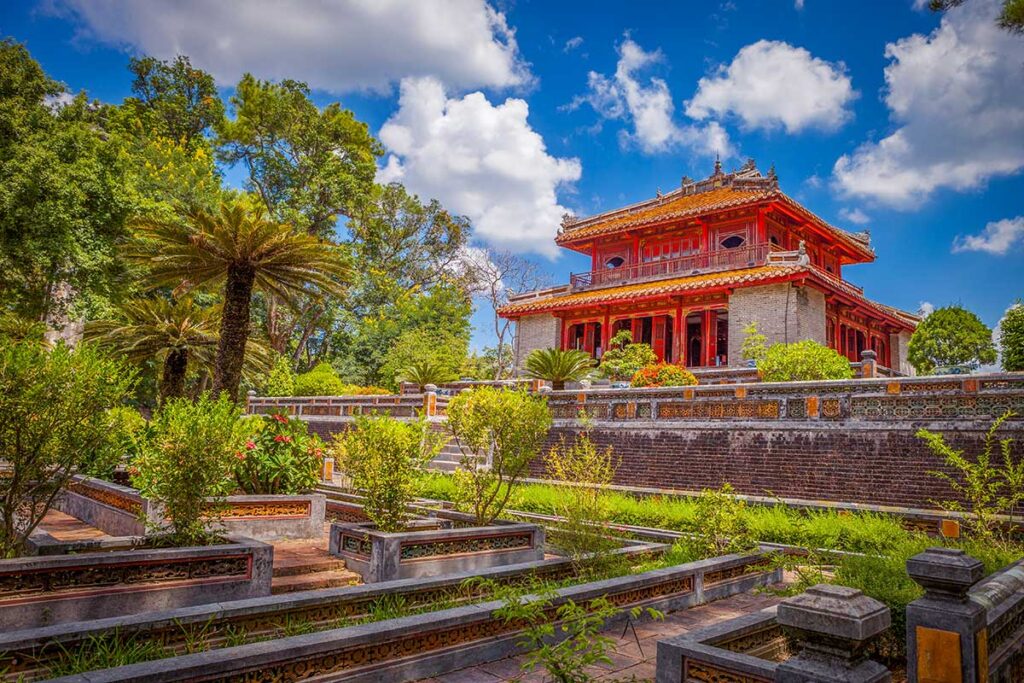
The journey from Hoi An to Hue is a popular one-day sightseeing transfer. Instead of taking the fast inland highway, most travelers choose the scenic coastal route — one of the most beautiful drives in Vietnam.
Along the way, you can stop at:
- Marble Mountains – caves, pagodas, and viewpoints
- Hai Van Pass – famous coastal road with panoramic views
- Lang Co Beach – a great spot for a coffee or seafood lunch
- Waterfalls and small fishing villages – optional short stops
You can also book this route by open-top military jeep or with a local Easy Rider motorbike tour, riding on the back with a driver. But a private car rental from Hoi An remains the most comfortable option, especially with luggage.
Travel time: Around 3–5 hours depending on stops
Tip: Let the car company know in advance if you want a sightseeing route, so the price and time can be adjusted accordingly.
Hue Historic City Tour from Hoi An or Da Nang
- Experience: Discover Hue’s royal heritage with visits to the Imperial Citadel, Khai Dinh Tomb, and Thien Mu Pagoda.
- Includes: Scenic Hai Van Pass drive, local lunch, and guided full-day tour from Hoi An or Da Nang.
4. My Son Sanctuary
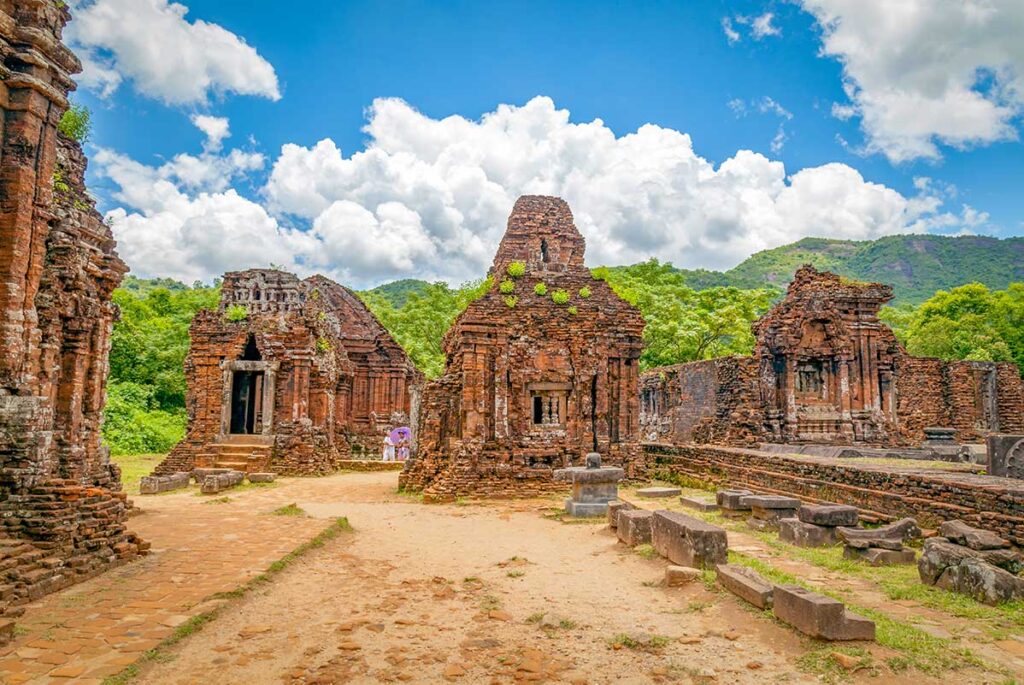
My Son is an ancient Hindu temple complex from the Champa Kingdom, located about 1 to 1.5 hours from Hoi An. It’s one of the most popular half-day trips by private car.
A driver will take you there, wait while you explore the site, and drive you back — making it a convenient and flexible option compared to joining a group tour.
If you’re looking to save a bit, guided tours are also available and often include extras like a boat ride back to Hoi An along the Thu Bon River. This makes for a more scenic and relaxing return journey.
Good to know:
- The sanctuary is best visited in the early morning to avoid heat
- You’ll need to buy your own entrance ticket if you take a private car instead of a tour
- It’s a UNESCO World Heritage Site and takes about 1–1.5 hours to explore
My Son Sanctuary Tour from Hoi An by Small Group
- Experience: Visit the UNESCO-listed My Son Sanctuary and learn about the ancient Cham civilization.
- Includes: Guided temple tour, countryside lunch, and scenic Thu Bon River cruise back to Hoi An.


